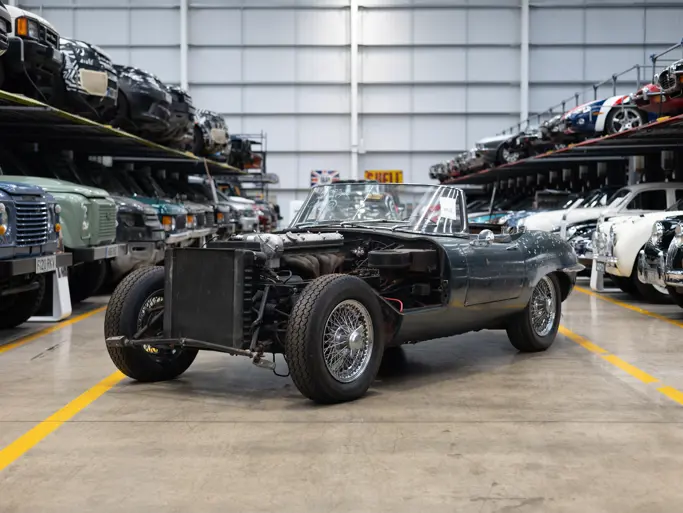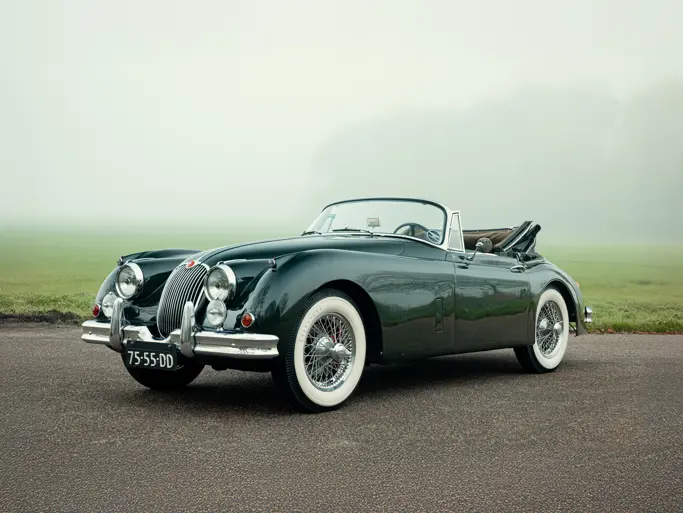
1953 Jaguar XK 120 Roadster
{{lr.item.text}}
$120,000 - $140,000 USD | Not Sold
{{bidding.lot.reserveStatusFormatted}}
- 3,442-cc, 160-hp DOHC in-line six-cylinder engine
- Four-speed manual transmission
- Classic British Racing Green over biscuit leather
- Frame-off restoration within the last five years
- Invoices and records from restoration included
- Gorgeous leather interior
- Great paint and chrome
- Beautiful restoration
- Proper wheel discs with rear wheel spats
- Ready to show and tour at JCNA events
During the war years, Jaguar’s Coventry factory turned out trailers and aircraft components; yet work continued by Sir William Lyons and his engineering staff on a new postwar engine. When peace returned, the designs were built and tested. After testing more than a half-dozen configurations, the modern XK powerplant evolved. Features included chain-driven twin overhead camshafts and a hefty crankshaft carrying seven oversize main bearings. The six-cylinder engine boasted an aluminum head and pistons along with steel connecting rods – output of this first engine was a healthy 160-hp at 5,200-rpm. The unit debuted in a slightly changed Mark V Jaguar of prewar design that helped generate cash flow while the new design for a new automobile was being finalized.
The XK 120 was originally nothing more than a holding place for the new engine. Just 200 were to have been built as the aluminum-bodied roadster was conceived as a low-volume sports car rather than a serious production vehicle. However, when the XK 120 made its debut at the Earls Court Motor Show in 1948, it created nothing short of a sensation in the automotive world.
The XK 120 offered a rare combination of astonishing speed, racecar handling, and the pleasure of driving a beautiful machine . . . all at a price of around $4,000; substantially less than other cars that couldn’t claim half its attributes. A total of 12,055 XK 120 roadsters, coupes, and drophead coupes were produced from 1948 to 1954 including 7,374 steel-bodied roadsters.
The elegant, curvaceous styling was the work of Sir William Lyons. The XK 120 got its name from the 120-mph top speed attained by prototypes including a top-speed run of 132.6-mph on the Jabbeke Highway in Belgium on May 30, 1949. Trend setting nearly 60 years ago, the car remains a milestone vehicle on either side of the Atlantic today.
Wearing a classic combination of British Racing Green over biscuit leather, this XK 120 is properly fitted with wheel discs and rear wheel spats. It benefits from a frame-off restoration over the last five years and the invoices and records from the restoration are included and available for inspection. The beautiful restoration features a gorgeous leather interior and is described as having great paint and chrome. This XK 120 is ready to show and tour at JCNA events.


 | Fort Lauderdale, Florida
| Fort Lauderdale, Florida


